Nestled in the heart of Hanoi’s Old Quarter, Buy Tramadol Cod Hang Gai Street stands as a vibrant testament to Vietnam’s rich cultural heritage and dynamic present. This bustling thoroughfare, whose name translates to “Silk Street,” offers visitors a captivating journey through time, showcasing centuries of history alongside the pulse of modern urban life. From its origins as a hub of silk production to its current status as a premier shopping destination, Hang Gai Street encapsulates the essence of Hanoi’s enduring charm and evolving identity.

Historical Significance of Hang Gai Street
The story of https://prioleauadv.com/archives/635 Hang Gai Street is deeply intertwined with the history of Hanoi itself, reflecting the city’s transformation from a medieval trading post to a thriving modern capital. This section explores the origins of this iconic street and the key historical events that have shaped its character over the centuries.
Buy Tramadol 50 Mg Origins of Hang Gai Street
Ambien 10 Mg Price Hang Gai Street‘s roots can be traced back to the 11th century, during the Ly Dynasty, when Hanoi (then known as Thang Long) was established as the capital of Vietnam. The street emerged as a specialized silk production and trading area, a role it would maintain for centuries to come.
The name “Hang Gai” literally translates to “Hemp Street,” which might seem at odds with its reputation for silk. However, this nomenclature reflects the diverse textile traditions of the area. While silk was indeed the primary product, hemp and other fibers were also processed and sold here, contributing to a rich tapestry of textile craftsmanship.
As Hanoi grew in importance as a commercial center, Buy Ambien Online Without Prescription Hang Gai Street became a crucial artery in the city’s economic lifeblood. Skilled artisans, primarily women, set up workshops and stores along the street, creating a thriving community of craftspeople. Their expertise in silk weaving, dyeing, and embroidery attracted traders from across Southeast Asia, establishing Hang Gai as a renowned destination for high-quality textiles.
The street’s strategic location, near the banks of the Red River and what would later become Hoan Kiem Lake, further enhanced its prominence. It became a natural gathering point for merchants, fostering cultural exchange and economic growth that would shape Hanoi’s development for centuries to come.
Buy Tramadol Online Overnight Key Historical Events Associated with Hang Gai Street
Throughout its long history, Carisoprodol Purchase Hang Gai Street has been witness to, and participant in, numerous pivotal events that have shaped not only the street itself but the broader narrative of Hanoi and Vietnam.
The Le Dynasty (15th-18th centuries) saw Zolpidem Buy Online Hang Gai Street flourish as never before. The imperial court’s demand for luxurious silk products fueled the street’s growth and reputation. It was during this period that many of the traditional guild structures and artisanal techniques associated with Hang Gai were codified, laying the foundation for centuries of craftsmanship.
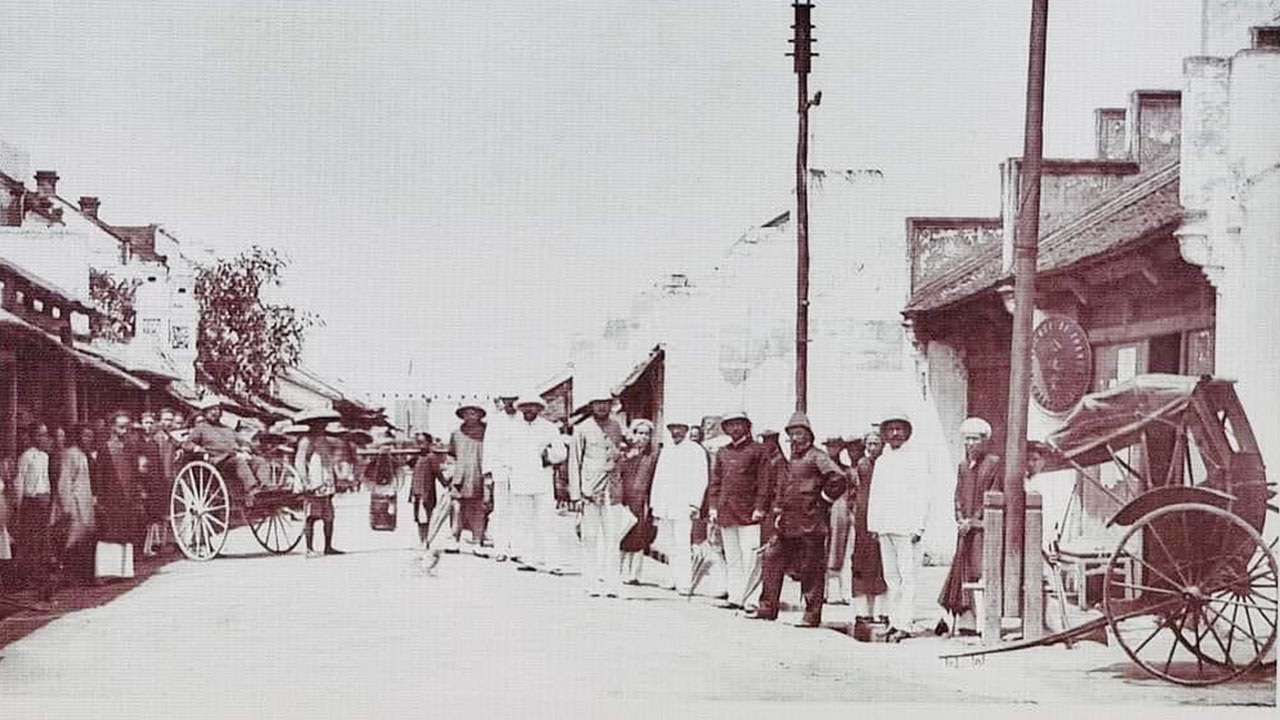
The arrival of French colonial rule in the late 19th century brought significant changes to Carisoprodol Purchase Hang Gai Street. While the colonial authorities sought to modernize Hanoi, they also recognized the cultural and economic value of the Old Quarter. As a result, Order Ultram Online Hang Gai Street experienced a unique fusion of traditional Vietnamese and French colonial influences. New architectural styles were introduced, and the street’s commercial focus expanded to cater to European tastes while maintaining its traditional silk trade.
During the struggle for independence in the mid-20th century, Hang Gai Street played a subtle but crucial role. Its narrow alleys and interconnected buildings provided cover for resistance activities, and many shops served as meeting points for revolutionaries. The street’s residents, like much of Hanoi, lived through the tumultuous period of conflict, occupation, and eventual liberation with resilience and determination.
In the post-war era, https://www.brigantesenglishwalks.com/isaacs-tea-trail/ Hang Gai Street faced new challenges and opportunities. The shift towards a centrally planned economy in the North initially impacted the street’s traditional trade practices. However, the economic reforms of the Doi Moi period, beginning in 1986, breathed new life into Hang Gai. The street adapted to the changing times, embracing tourism while striving to maintain its cultural heritage.
Today, https://osteomedical.com.br/produtos/ortopedia/ Hang Gai Street stands as a living museum of Hanoi’s history. Its buildings, businesses, and the very fabric of daily life on the street reflect layers of history – from ancient trading traditions to colonial influences, revolutionary spirit, and modern economic dynamism. It remains a vital part of Hanoi’s Old Quarter, attracting visitors from around the world who come to experience its unique blend of past and present.
https://www.pvgov.com/legislation/ Architectural Highlights of Hang Gai Street
The architectural landscape of Cost Of Ambien 10 Mg Hang Gai Street offers a fascinating window into Hanoi’s past and present. Here, centuries-old traditional Vietnamese designs stand shoulder to shoulder with colonial-era buildings and modern structures, creating a unique urban tapestry that tells the story of the city’s evolution.
Mail Order Tramadol Traditional Architecture vs. Modern Influences
The traditional architecture of Buy Zolpidem Without A Prescription Hang Gai Street is characterized by its distinctive “tube houses” – long, narrow buildings that often stretch back 50-60 meters from the street front. This unique design evolved in response to historical tax laws that were based on the width of a property’s street frontage. The result is a streetscape of slender facades, often no more than 3-4 meters wide, that belie the depth and complexity of the buildings behind them.
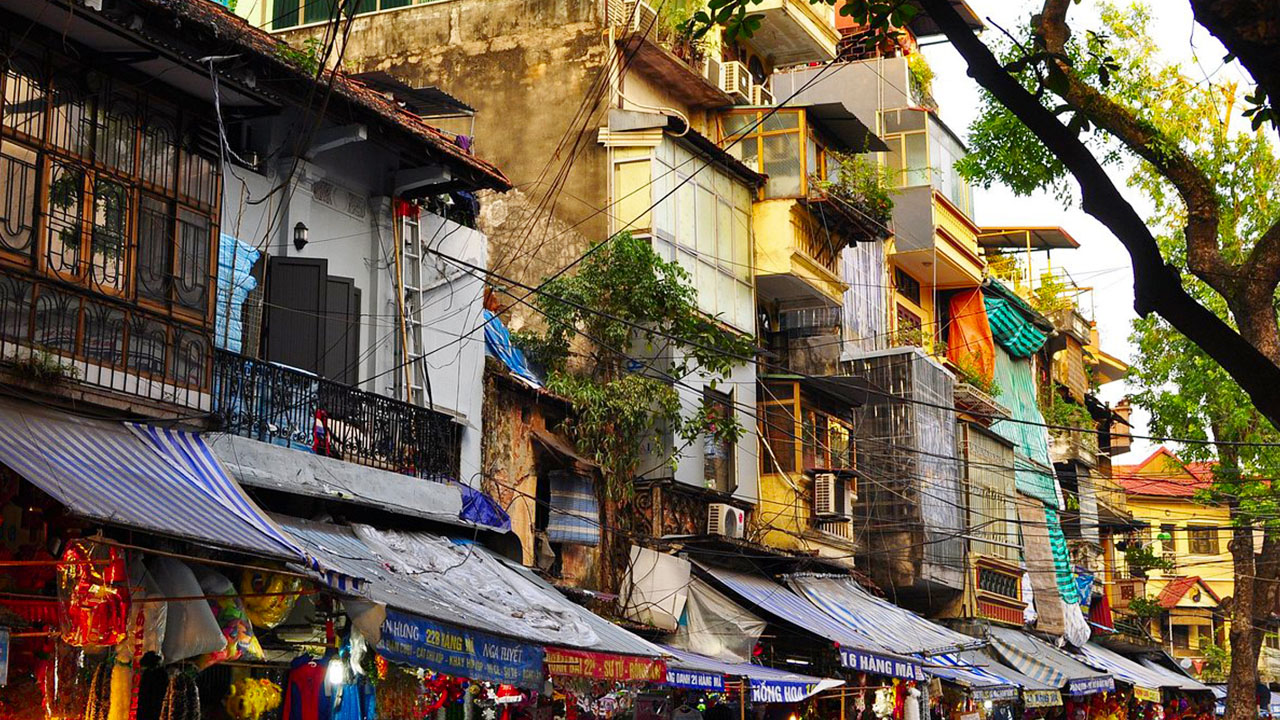
These traditional houses typically feature multiple courtyards, allowing for natural light and ventilation throughout the building. The front sections often served as shops or workshops, with living quarters located towards the rear or on upper floors. Many of these buildings still retain their original wooden structures, intricate carvings, and tiled roofs, offering a glimpse into the craftsmanship of bygone eras.
In contrast, modern influences on https://radioencuentro.org/produccion/ Hang Gai Street are evident in the renovations and new constructions that have appeared in recent decades. Glass storefronts, air-conditioned interiors, and contemporary signage now coexist with traditional elements. Some buildings have been completely rebuilt in modern styles, while others incorporate modern amenities while maintaining traditional facades.
This juxtaposition of old and new creates a dynamic architectural environment. Walking down Hang Gai Street, one can observe the layers of history in its buildings – from centuries-old structures to French colonial additions, post-war modifications, and 21st-century updates. This blend reflects Hanoi’s ongoing negotiation between preserving its heritage and adapting to the needs of a modern capital city.
Zolpidem Buy Online Notable Buildings on Hang Gai Street
While https://rheumatologyde.com/osteoporosis/ Hang Gai Street is known more for its overall ambiance than for individual landmark buildings, there are several structures that stand out for their historical significance or architectural merit.
One of the most notable is the Ancient House at 87 Hang Gai. This well-preserved example of a traditional Hanoi merchant’s home dates back to the late 19th century. Its interior showcases the typical layout of a tube house, with multiple courtyards and intricate wooden furnishings. The building now serves as a small museum, offering visitors a glimpse into the lifestyle of Hanoi’s merchant class during the colonial era.
Another significant structure is the Hang Gai Silk Company building. While not as old as some of its neighbors, this building has played a crucial role in maintaining Hang Gai’s connection to its silk-trading past. The company, established in the mid-20th century, has been instrumental in preserving traditional silk-making techniques while adapting to modern market demands.
Several French colonial-era buildings also dot the streetscape, identifiable by their European architectural elements such as shuttered windows, balconies, and ornate ironwork. These buildings, often painted in soft yellows and greens characteristic of French colonial style, add another layer to the street’s architectural diversity.
At the intersection of Hang Gai and Hang Bong streets stands a beautifully restored corner building that exemplifies the successful blend of traditional and modern elements. Its curved facade and large windows speak to colonial influences, while the renovated interior caters to contemporary retail needs.
As Order Ambien Without A Prescription Hang Gai Street continues to evolve, new architectural additions are being made with varying degrees of sensitivity to the historical context. Some recent constructions attempt to echo traditional design elements, while others embrace a more contemporary aesthetic. This ongoing architectural dialogue ensures that Hang Gai Street remains not just a preserved relic of the past, but a living, breathing part of Hanoi’s urban fabric.
https://www.rednirussuppliers.com/meltic-healthcare-pvt-ltd/ Shopping Experience on Hang Gai Street
Hang Gai Street, true to its historical roots as a center of commerce, continues to offer one of the most diverse and engaging shopping experiences in Hanoi. From traditional silk products to contemporary fashion, handicrafts to modern art, the street caters to a wide range of tastes and interests.
Unique Local Boutiques and Shops
The heart of Hang Gai Street‘s shopping experience lies in its numerous unique local boutiques and shops. These establishments, many of which have been family-run for generations, offer a glimpse into Vietnam’s rich artisanal traditions while also showcasing contemporary creativity.
Silk shops remain the street’s primary draw, continuing a tradition that spans centuries. Stores like Minh Hanh Silk Boutique and Tan My Design are renowned for their high-quality silk products, ranging from traditional ao dai (Vietnam’s national dress) to modern fashion items, accessories, and home decor. Many of these shops offer custom tailoring services, allowing visitors to have bespoke garments created from the beautiful silks on display.

Beyond silk, Hang Gai Street is home to a variety of handicraft shops. These stores offer a treasure trove of Vietnamese artisanal products, including lacquerware, ceramics, wooden crafts, and traditional paintings. Shops like Authentique and Hanoia showcase how traditional crafts are being reimagined for contemporary tastes, offering elegant, modern designs that still honor age-old techniques.
For those interested in Vietnam’s artistic heritage, several galleries and art shops line the street. These spaces feature works by both established and emerging Vietnamese artists, offering everything from traditional landscape paintings to avant-garde sculptures and installations.
In recent years, a new generation of designers and entrepreneurs has brought fresh energy to Hang Gai Street. Boutiques like Chula Fashion House and Ipa-Nima blend Vietnamese aesthetics with contemporary design, creating unique fashion pieces that appeal to both locals and tourists.
The street also houses several shops specializing in Vietnamese tea and coffee. These establishments not only sell a variety of local teas and coffees but often provide a space for visitors to sample these beverages, offering a sensory journey through Vietnam’s rich culinary traditions.
Comparison of Prices: Local vs. Touristy Shops
As with many popular shopping destinations, prices on Hang Gai Street can vary significantly depending on the type of establishment and its target clientele. Understanding these variations can help visitors make informed decisions and find the best value for their purchases.
Local shops, often tucked away in smaller storefronts or down side alleys, generally offer more competitive prices. These establishments typically cater to a mix of local customers and savvy tourists. While the ambiance might be less polished than in more tourist-oriented shops, the quality of goods can be equally high, if not superior. These shops often provide a more authentic shopping experience, with opportunities to interact directly with artisans or shop owners.
On the other hand, shops clearly geared towards tourists, particularly those with prime locations and elaborate displays, tend to have higher prices. These establishments often offer a more curated selection of products and may provide additional services such as English-speaking staff, international shipping, and more flexible payment options. While prices are higher, the shopping experience is often more comfortable for international visitors unfamiliar with local bargaining practices.
It’s worth noting that bargaining is a common practice in many shops on Hang Gai Street, particularly in smaller, locally-oriented establishments. However, in high-end boutiques and galleries, prices are usually fixed. When bargaining, it’s important to do so respectfully and to understand that extremely low prices may indicate lower quality or less ethical production practices.
For those seeking the best value, comparing prices across different shops is advisable. Many stores sell similar items, and prices can vary significantly. However, it’s important to consider factors beyond just price – the quality of materials, craftsmanship, and ethical considerations should also play a role in purchasing decisions.
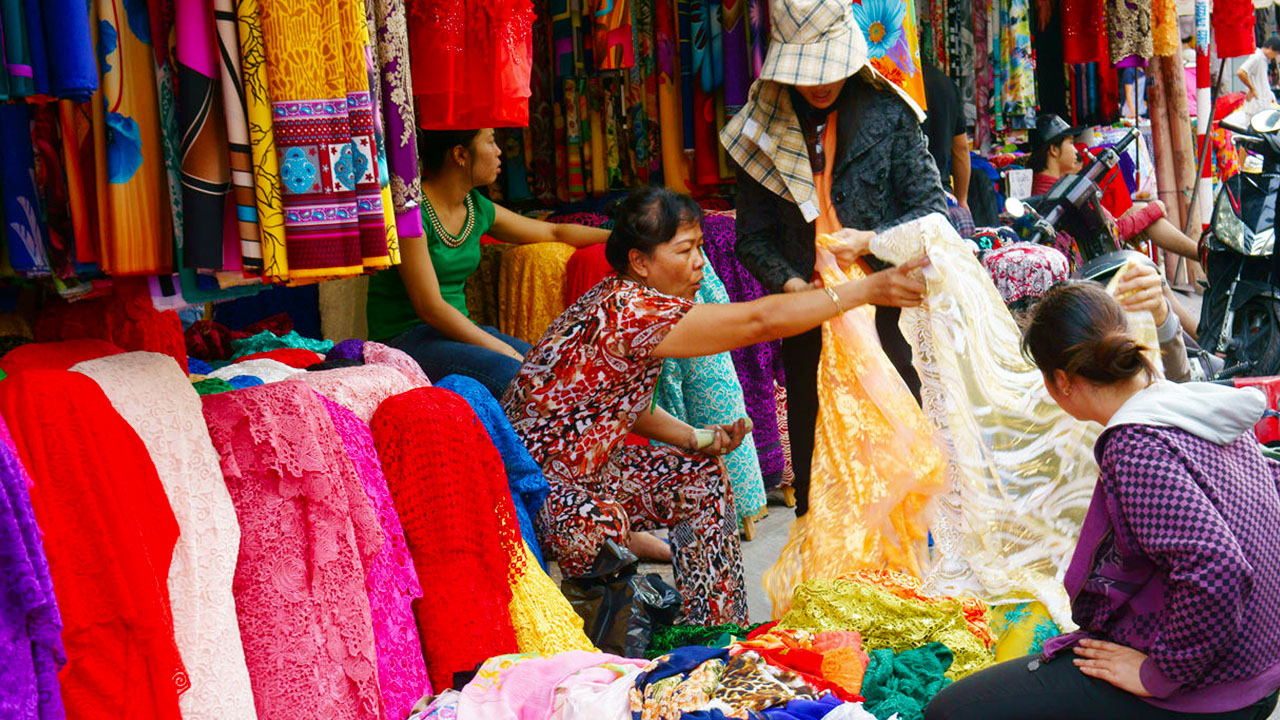
Ultimately, the shopping experience on Hang Gai Street is about more than just finding the lowest price. It’s an opportunity to engage with Vietnam’s rich cultural heritage, support local artisans and businesses, and find unique items that tell a story. Whether browsing in a high-end boutique or negotiating in a small family-run shop, each purchase on Hang Gai Street carries with it a piece of Hanoi’s history and culture.
Culinary Delights of Hang Gai Street
While Hang Gai Street is primarily known for its shopping, it also offers a rich tapestry of culinary experiences that reflect Hanoi’s diverse food culture. From street-side snacks to upscale restaurants, the street and its surrounding area provide a gastronomic journey through Vietnamese cuisine.
Traditional Vietnamese Delicacies Found on Hang Gai Street
Hang Gai Street and its vicinity are home to a variety of traditional Vietnamese delicacies that have been cherished by locals for generations. These dishes not only satisfy hunger but also offer insight into the culinary heritage of Hanoi.
One cannot talk about food on Hang Gai Street without mentioning pho, Vietnam’s iconic noodle soup. While the street itself may not be famous for pho, several excellent pho restaurants can be found in the nearby alleys. These establishments serve steaming bowls of fragrant broth filled with rice noodles, tender meat (usually beef or chicken), and fresh herbs. Each bowl is a testament to the complex flavors and textures that define Vietnamese cuisine.
Banh mi, the Vietnamese sandwich that has gained international fame, is another staple found along Hang Gai Street. Street vendors and small shops offer these crusty baguettes filled with a variety of ingredients such as pate, grilled meats, pickled vegetables, and fresh herbs. The combination of French colonial influence (the baguette) and Vietnamese flavors makes banh mi a perfect representation of Hanoi’s culinary fusion.
For those with a sweet tooth, Hang Gai Street offers several traditional desserts. Che, a sweet soup that comes in many varieties, is a popular choice. Made with ingredients like mung beans, black-eyed peas, jellies, and coconut milk, che is a refreshing treat, especially during Hanoi’s hot summers. Another local favorite is banh troi tau, glutinous rice balls filled with mung bean paste and served in a sweet ginger syrup.
Street food enthusiasts will find plenty to explore in the small alleys branching off Hang Gai Street. Here, makeshift stalls and small eateries serve up an array of local specialties. Bun cha, a dish of grilled pork served with rice noodles and herbs, is a lunchtime favorite. Nem ran (fried spring rolls) and banh cuon (steamed rice rolls filled with ground pork and mushrooms) are other popular choices that showcase the diversity of Hanoi’s street food scene.
Popular Cafes and Restaurants: A Comparison
In addition to street food and traditional eateries, Hang Gai Street and its surrounding area have seen an influx of modern cafes and restaurants in recent years, catering to evolving tastes and a growing tourist market.
Cong Caphe, a popular Vietnamese coffee chain, has a branch near Hang Gai Street. Known for its Soviet-inspired decor and innovative coffee creations, it offers a modern twist on Vietnam’s coffee culture. Their coconut coffee smoothie is a particular favorite among visitors looking to beat the heat.
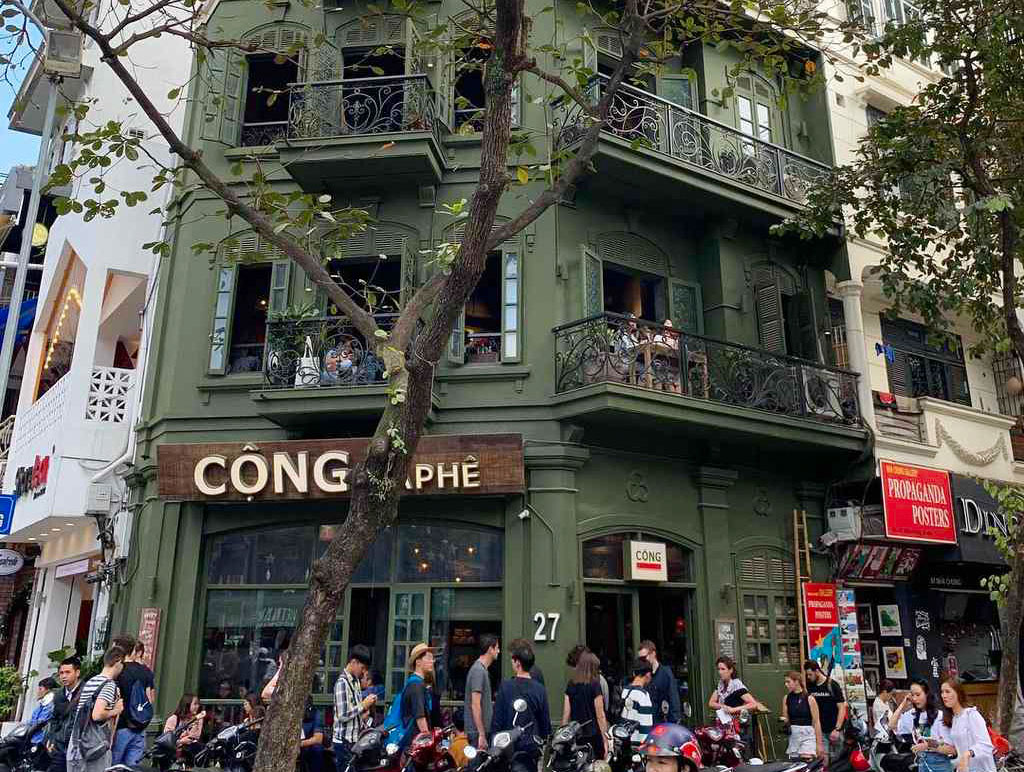
For those seeking a more upscale dining experience, La Badiane, located just off Hang Gai Street, offers French cuisine with a Vietnamese twist. Set in a colonial-era villa, it provides a stark contrast to the street food scene, showcasing the diversity of Hanoi’s culinary landscape.
Hanoi Social Club, another nearby establishment, caters to a younger, more international crowd. With its eclectic menu featuring both Western and Asian-inspired dishes, and a focus on vegetarian and vegan options, it represents the evolving food scene in Hanoi’s Old Quarter.
For a taste of Hanoi’s cafe culture, Giang Cafe is a must-visit. Famous for its egg coffee – a Hanoi invention that tops strong Vietnamese coffee with a creamy egg-based foam – this unassuming cafe has been serving locals and tourists alike for decades.
These diverse dining options reflect the changing face of Hang Gai Street and the Old Quarter. While traditional street food and local eateries continue to thrive, new establishments are constantly emerging, offering fresh interpretations of Vietnamese cuisine and introducing international flavors to the area.
The culinary scene on Hang Gai Street, much like its shopping and architecture, is a blend of old and new, traditional and modern. It offers visitors a chance to taste the history of Hanoi while also experiencing its culinary future. Whether enjoying a bowl of pho on a tiny plastic stool or sipping artisanal coffee in a trendy cafe, the food experiences on Hang Gai Street are an integral part of its charm and appeal.
Cultural Activities and Events on Hang Gai Street
Hang Gai Street, beyond its shopping and culinary offerings, serves as a vibrant cultural hub within Hanoi’s Old Quarter. Throughout the year, the street comes alive with various events and activities that showcase Vietnam’s rich cultural heritage and contemporary artistic expressions.
Festivals Celebrated on Hang Gai Street
Hang Gai Street plays a significant role in many of Hanoi’s traditional festivals, offering both locals and tourists a chance to immerse themselves in Vietnamese culture.
The Tet Festival, or Vietnamese Lunar New Year, transforms Hang Gai Street into a festive wonderland. The street becomes adorned with red and gold decor, and local vendors set up stalls selling traditional decorations, sweets, and foods that are integral to the celebration. The atmosphere buzzes with excitement as families come together to honor ancestral traditions, exchange good wishes, and partake in festive activities.
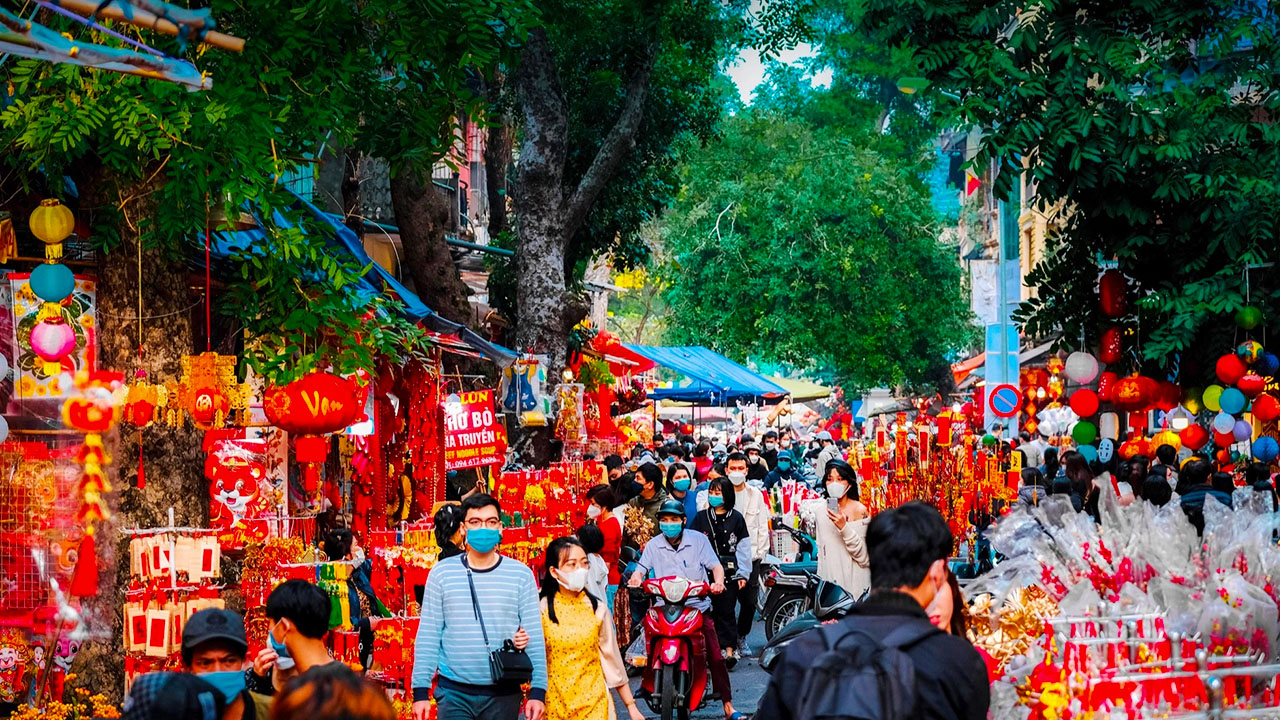
Moreover, the street is known for its Mid-Autumn Festival, where children, equipped with lanterns, stroll through Hang Gai, illuminating the night and breathing life into the vibrant celebrations. On this occasion, local delicacies like mooncakes fill the air with enticing aromas, creating a warm, communal spirit that reflects the essence of Vietnamese culture. Visitors can witness traditional lion dances and folk performances, fostering a sense of camaraderie among all who participate.
Art and Exhibitions: A Look at Local Talent
In addition to festivals, Hang Gai Street provides a platform for various artistic expressions. Galleries and cultural centers nestled along the street regularly host exhibitions featuring works by local artists. This not only helps promote emerging talent but also enriches the cultural fabric of the neighborhood, inviting both tourists and locals to engage with contemporary art.

Exhibitions often encompass diverse media, ranging from traditional painting and sculpture to modern installations that critique social issues or celebrate Vietnamese heritage. Such events create an intersection between the old and new, revitalizing Hang Gai’s artistic scene while paying homage to its historical roots. The presence of art schools in the area further cultivates a thriving creative community, fostering connections between artists and audiences.
Street art has also begun to take root in the vicinity, showcasing the voices of young Vietnamese artists. Murals and graffiti reflecting themes of daily life, history, and identity add vibrant splashes of color to the streetscape, transforming pedestrian walks into dynamic galleries. Engage with these visual narratives on leisurely strolls, where every corner presents a potential discovery, reinforcing that the heart of Hang Gai Street beats not just through commerce and cuisine but through creative expression as well.
Visitor Tips for Hang Gai Street
For those planning to explore Hang Gai Street, understanding the nuances of visitation can enhance the overall experience significantly. From optimizing travel routes to recognizing the best times for exploration, this segment aims to provide practical insights for an unforgettable journey.
Best Times to Visit Hang Gai Street
Timing plays a crucial role in the enjoyment of Hang Gai Street. While the street bustles throughout the day, early mornings are particularly alluring. At dawn, locals begin setting up shop, engulfing the air with the intoxicating aroma of brewing coffee. This time offers a quieter atmosphere, allowing visitors to wander and soak in the rich surroundings without the overwhelming crowds typically found later in the day.
As the sun rises higher, midday can be a bit frenetic. Given the street’s popularity compared to other parts of the Old Quarter, it attracts many families and tourists during lunchtime. Although you may savor a delicious bowl of noodles amidst the chatter and clatter, be prepared for slightly longer wait times at certain dining spots. Late afternoons and early evenings, especially around sunset, will present a chance to revel in the golden hue cast upon the buildings—an excellent backdrop for photos as the street comes alive with activity.
Navigating Hang Gai Street: Transport Options
Navigating Hang Gai Street is notably manageable, thanks to the plethora of transport options available. Taxis, motorbikes, and bicycles can efficiently carry visitors to their desired locations throughout Hanoi. Grab and other ride-hailing apps have gained immense popularity, making it convenient for travelers to request rides without the hassle of negotiating fares.
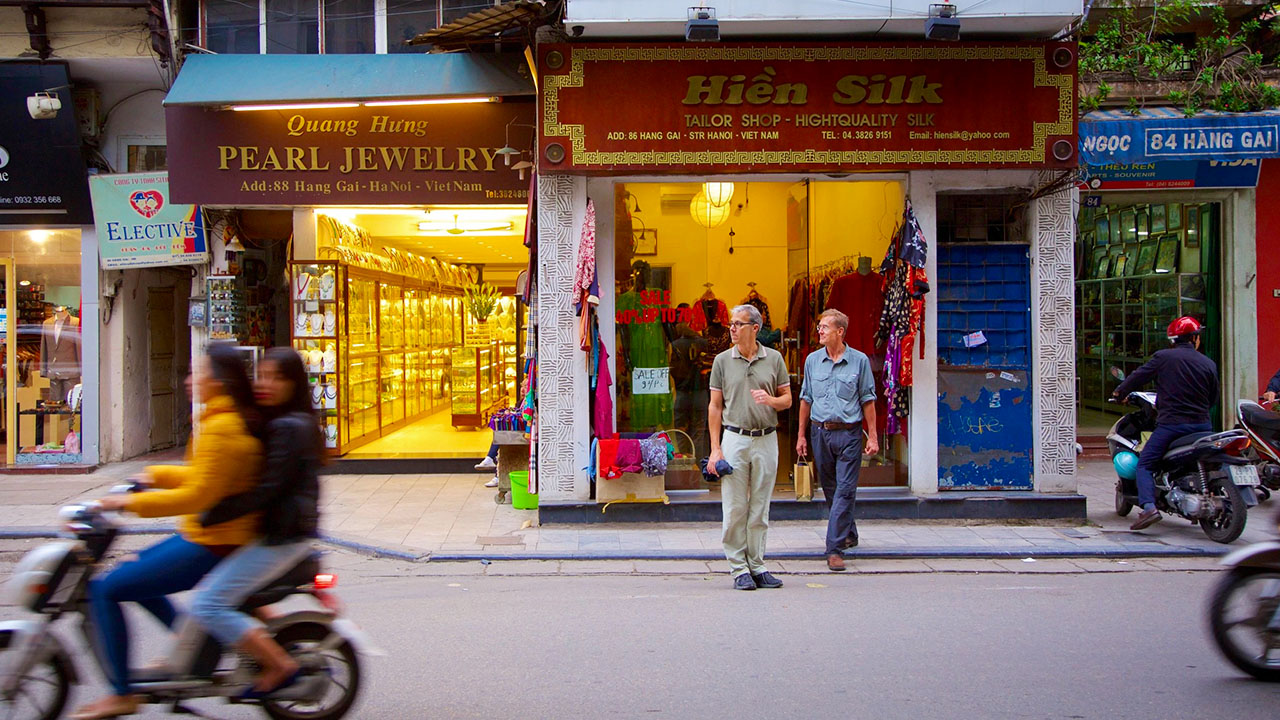
Alternatively, venturing on foot is highly recommended, allowing for a more intimate exploration of the street’s wonders. The act of wandering allows visitors to discover hidden gems: quaint cafes, artisanal shops, and talented street performers. Furthermore, bicycle rentals are available, offering an enjoyable means to soak in the surrounding sites at a leisurely pace.
The compact nature of Hang Gai Street enables an immersive experience, making it specific to individuals’ preferences regardless of how they choose to navigate it. Whether you wish to indulge your culinary curiosity, dive deep into local arts or simply unwind in charming little nooks, traversing the street at a comfortable pace reveals a multifaceted picture of Hanoian life.
Environmental Aspects of Hang Gai Street
As tourism flourishes in Hang Gai Street, it becomes imperative to address the environmental aspects linked to increased foot traffic. Balancing the vibrant energy of the street with ecological mindfulness is not only essential for preserving its beauty but also enriching the quality of life for residents and visitors alike.
Green Spaces and Their Importance
In the heart of the bustling Old Quarter, green spaces serve as essential havens within Hang Gai. Though relatively limited, small parks and tree-lined streets offer respite from the chaos, inviting relaxation amid the hustle. These areas are instrumental in promoting biodiversity, providing habitats for various urban wildlife.
Initiatives to develop green spaces are increasingly important, as local authorities recognize their contribution to improving air quality and combating urban heat. Encouraging outdoor cafes and gardens not only beautifies the environment but also offers opportunities for social interaction, melding urban community living with nature.
Visitors should take the time to appreciate these patches of green, which contribute positively both visually and ecologically. Engaging in a moment of stillness while sipping a coffee surrounded by blooming flora adds a depth to the experience of exploring Hang Gai Street.
Impact of Tourism on the Local Environment
While the influx of tourists enhances economic vibrancy along Hang Gai Street, it simultaneously poses challenges to the local environment. Increased waste, noise, and congestion strain existing resources and can diminish the region’s charm if left unchecked. However, proactive efforts toward sustainable tourism practices provide a silver lining.
Both shopkeepers and visitors can adopt mindful practices, such as reducing plastic use and supporting local artisans who incorporate eco-friendly materials in their products. Collaborations between local businesses and environmental organizations aim to raise awareness about responsible tourism, thus encouraging visitors to engage positively with the community.
Fostering a sense of stewardship among tourists allows Hang Gai Street to maintain its allure while ensuring its sustainability for future generations. By committing to respectful engagement, everyone can enjoy its beauty without compromising its integrity.
Conclusion
In conclusion, Hang Gai Street stands as a microcosm of Hanoi’s rich culture, history, and evolving identity. It invites visitors to indulge in its shopping experiences, savor the breadth of culinary delights, experience cultural vibrancy, and appreciate the delicate balance between tradition and modernity. Through every interaction along this captivating street, the echoes of the past harmonize with contemporary aspirations, creating an engaging tapestry that awaits exploration.
Whether you’re drawn to the historic architecture, the unique boutiques, or the inspiring artistic happenings, Hang Gai Street promises an experience that transcends mere visits, inviting deeper connections to the heart of Vietnam. Upon departing, travelers leave not only with souvenirs but with cherished memories and stories to share—a testament to the enduring allure of this enchanting street.


